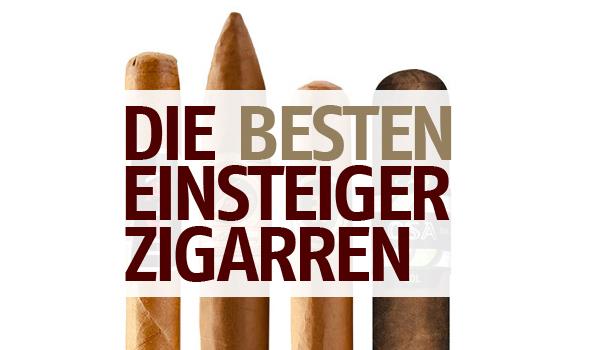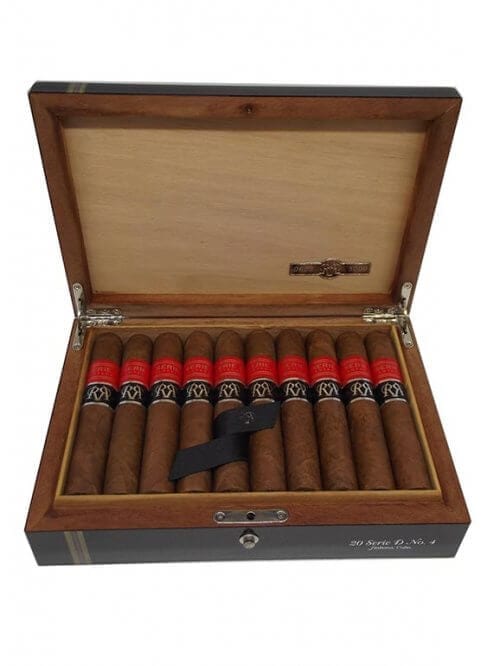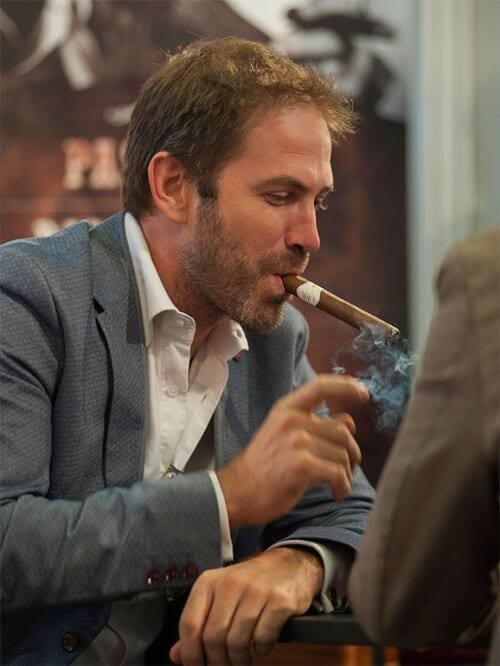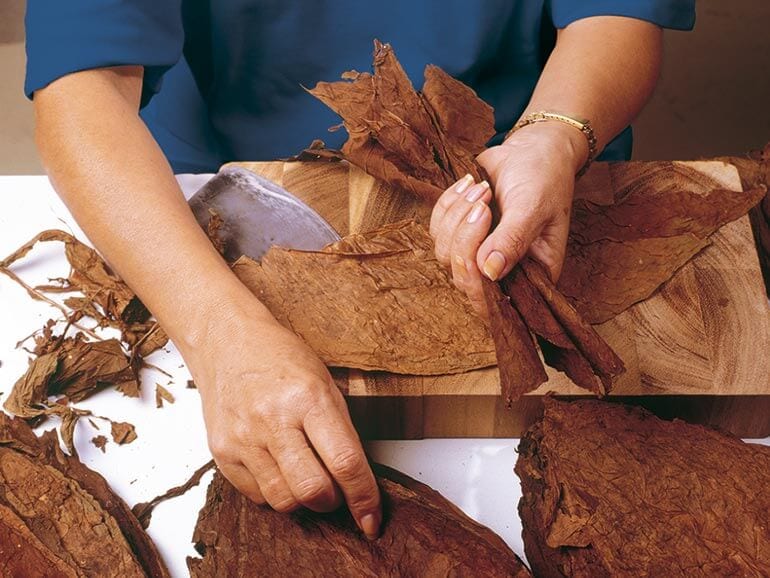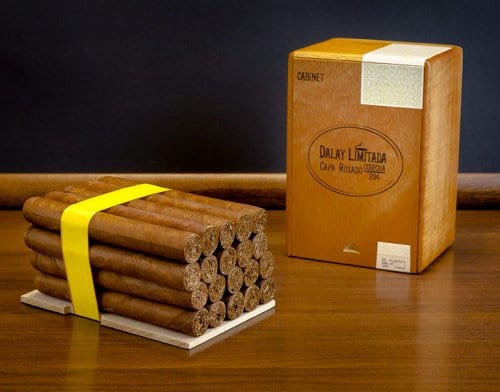Why the Cigar Industry Loves Ecuador’s Outstanding Wrapper Leaf
There’s a running gag among farmers in Ecuador: “Snap a broom handle in half, stick it in the ground, and soon you will be growing brooms.” An exaggeration, no doubt, but Ecuadorian soil is so rich and fertile, just about any seed you throw at it will flourish in it.
That’s especially true for premium cigar wrapper tobacco that’s been grown in Ecuador since the early 1960s when the U.S. trade embargo of Cuba caused growers to seek alternatives to Cuban tobacco.
The two most prolific tobacco growers in Ecuador are family-owned companies that share generations-long histories in the tobacco trade going back to their native Cuba: A.S.P. Enterprises, Inc. A.S.P. specializes in the golden brown Connecticut seed wrappers, and the Oliva Tobacco Company, which supplies most of the Ecuadorian Sumatra and Habano seed wrappers to the industry.
There are two important reasons why Ecuador has become the Mecca for premium cigar wrapper tobacco: its soil and cloud-filled skies.
Ecuador is home to 32 active volcanoes. The ash and other volcanic residue act as organic fertilizer, making the soil rich in minerals and ideal for growing tobacco. Then there’s the continual cloud cover that acts as a natural filter. With a growing season that runs from May to January and only 500 hours of sunshine per year, the plants grow taller and produce leaves that are much more oily and pliable.
So, who’s using all of this outstanding Ecuadorian wrapper? Just about every cigar manufacturer in the business. Recently, I spoke to some cigar industry experts who gave me their take on why they love working with Ecuadorian wrapper.
“Ecuador is one of the best spots to grow virtually anything,” says Jhonys Diaz, Vice President of Operations for General Cigar. “It has excellent soil, plenty of available water and a superb climate, especially in the Quevedo region with its natural cloud cover that mimics the way we grow tobacco under shade cloth in Connecticut. All these factors combine to produce a tobacco leaf with excellent color, texture, fine veins and a beautiful sheen.”
As for the taste and strength attributes of the most popular Ecuadorian wrappers, Diaz says it depends on what one wants to accomplish with any given blend.
“Ecuador Connecticut Shade has a nice appearance, but is mostly neutral in flavor, so it needs a flavorful blend to back it up. Ecuador Havana has a nice texture and color. The higher priming leaves provide more flavor to the blend, but only if fermented for longer periods of time. Ecuador Sumatra is the second best wrapper for handmade cigars in my opinion. The mid and upper-priming leaves are rich in flavor, aroma and potency. It’s woody and peppery and can produce a powerful, complex smoke that brings forth some of the best characteristics in a cigar.”
“Ecuador is the perfect place in the world to grow wrapper,” says Ernesto Perez-Carrillo, founder of EPC Cigar Co. “It’s cost effective, plus the climate conditions and soil yield a very rich smoke that is very aesthetically uniform.”
“I especially love the spice of the Ecuador Habano,” adds EPC’s senior vice president, José Blanco. “In addition to its unique flavor, it makes things easier when you are blending. Take Ecuadorian Sumatra, which both Ernie and I have always loved. The Indonesian variety is sharp, metallic and bland, while the Ecuador offers a ton of flavor and aroma. It’s totally different, and when you have a spectacular crop, this wrapper is as good as it gets.”
 “I’ve always been a fan of Ecuador Connecticut tobacco over U.S. Connecticut grown shade tobacco,” says Steve Saka, founder of Dunbarton Tobacco & Trust. “The Ecuador variety isn’t as delicate on the table, which I find easier to work with. More importantly, is the flavor. The leaf rarely exhibits the bitterness of Windsor Valley, Connecticut, which almost always turns grassy and bitter if it’s slightly over-smoked, whereas the Ecuador can endure higher combustion temps without negatively impacting its flavor.”
“I’ve always been a fan of Ecuador Connecticut tobacco over U.S. Connecticut grown shade tobacco,” says Steve Saka, founder of Dunbarton Tobacco & Trust. “The Ecuador variety isn’t as delicate on the table, which I find easier to work with. More importantly, is the flavor. The leaf rarely exhibits the bitterness of Windsor Valley, Connecticut, which almost always turns grassy and bitter if it’s slightly over-smoked, whereas the Ecuador can endure higher combustion temps without negatively impacting its flavor.”
“With regard to Ecuador Habano, I was somewhat dismissive of it for many years because it lacked the flavor and potency I got from sun-grown Central American Habano tobaccos,” continues Saka. “However, my perspective changed as I gained more experience working with it. I learned that you need to be more selective when sorting and go to the higher primings more frequently. I’ve also discovered that many of the traditional capa/binder combinations that work well with the Central American and Caribbean grown Cuban-seed leaf do not bring out the best in the Ecuador variety, so from a blending perspective, it required me to broaden my horizons. Now I find myself actually favoring this tobacco in many cases.”
“I think the Ecuador Habano has the most flavor of any wrapper out there,” says Rocky Patel. “The wrappers are a bit thinner and tend to have more spice, pepper, sweetness and caramel notes. The Sumatra offers more white pepper and spice, making it a little punchier in flavor. You can get a really full-bodied cigar if you use the 7th or 8th primings, while the middle 4th and 5th primings offer more medium-full body. But the key to getting the most out of Ecuadorian-grown wrapper is a lot of fermentation.”
 „About 40% of our overall production is rolled with Ecuadorian Connecticut,” says Nick Perdomo. “Many years ago I bought Windsor Valley-grown wrapper, but later on, I started buying the Ecuador A.S.P. U.S. Connecticut wrappers have large, noticeable pores, whereas the Ecuador variety has a very small vein structure which makes it more oily, plus, it has better texture and stretch.” „Although I like the U.S. Connecticut, I feel that the Ecuador is superior, and I also prefer the higher primings like the 6th, 7th and 8th. They’re not as grainy, and sometimes the leaves are so shiny it’s like looking in a mirror. It blends really well with Nicaraguan tobacco, and you get that naturally creamy, almost sweet flavor from it, plus, it burns perfectly.”
„About 40% of our overall production is rolled with Ecuadorian Connecticut,” says Nick Perdomo. “Many years ago I bought Windsor Valley-grown wrapper, but later on, I started buying the Ecuador A.S.P. U.S. Connecticut wrappers have large, noticeable pores, whereas the Ecuador variety has a very small vein structure which makes it more oily, plus, it has better texture and stretch.” „Although I like the U.S. Connecticut, I feel that the Ecuador is superior, and I also prefer the higher primings like the 6th, 7th and 8th. They’re not as grainy, and sometimes the leaves are so shiny it’s like looking in a mirror. It blends really well with Nicaraguan tobacco, and you get that naturally creamy, almost sweet flavor from it, plus, it burns perfectly.”
This article was written exclusively for Cigar Journal by Gary Korb, www.cigaradvisor.com
